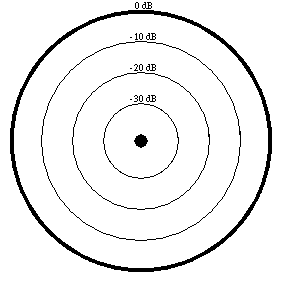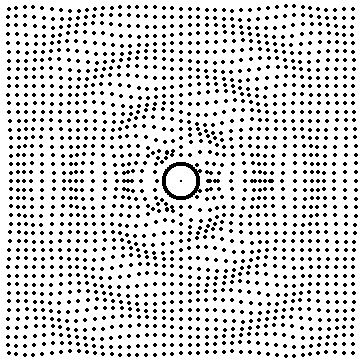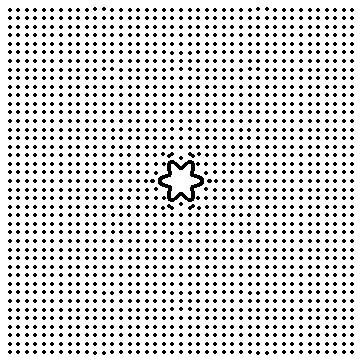 |
The first mode of the cylinder corresponds to a breathing mode in which the cylinder radius expands and contracts, all parts of the cylinder moving inward or outward at the same rate. The movie at left (0.5 MB mpeg) shows the motion of the cylinder as well as the resulting motion of the particles in the fluid surrounding the cylinder. Each particle oscillates back and forth about some equilibrium radius
(in order to improve the visual effect, the actual particle displacements have been amplified by a power of 2). However, the phase of their relative motions produces an outward travelling spherical wave. The wavefronts (point of constant phase) are circles, and the maximum particle displacement is the same at any point on a wavefront.
|





